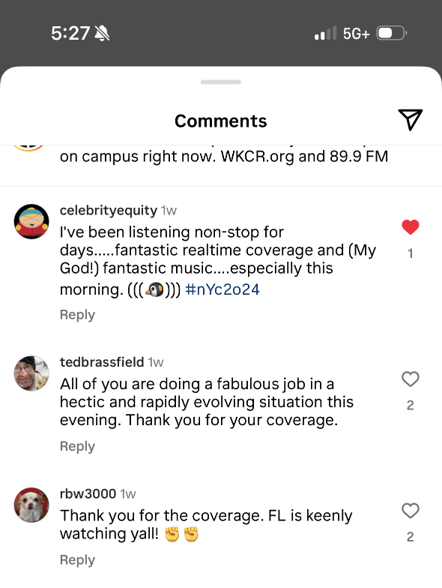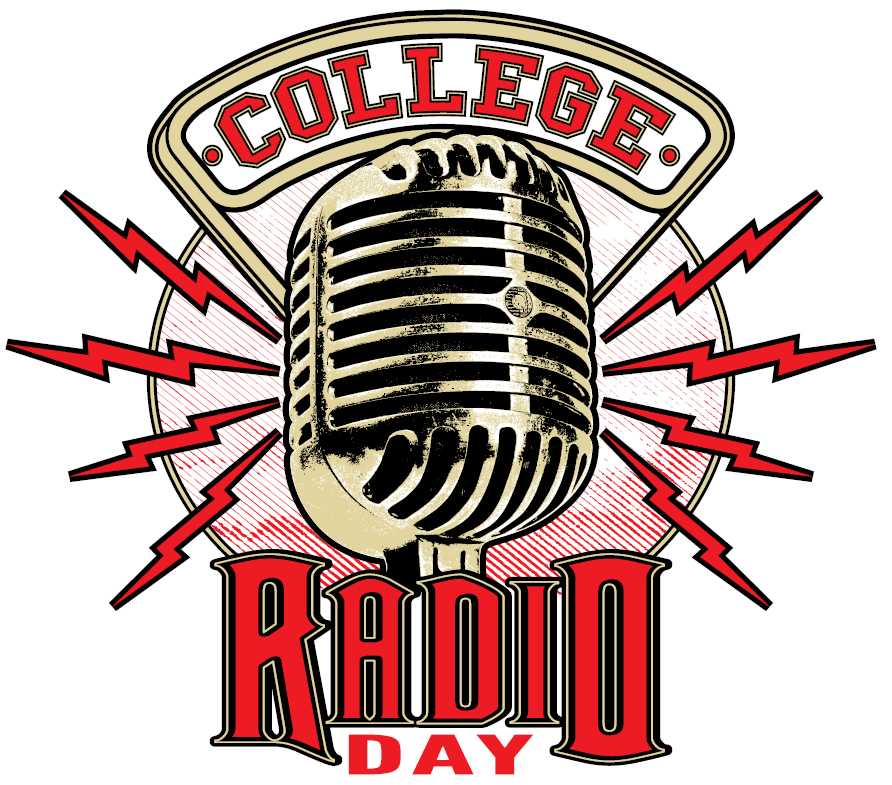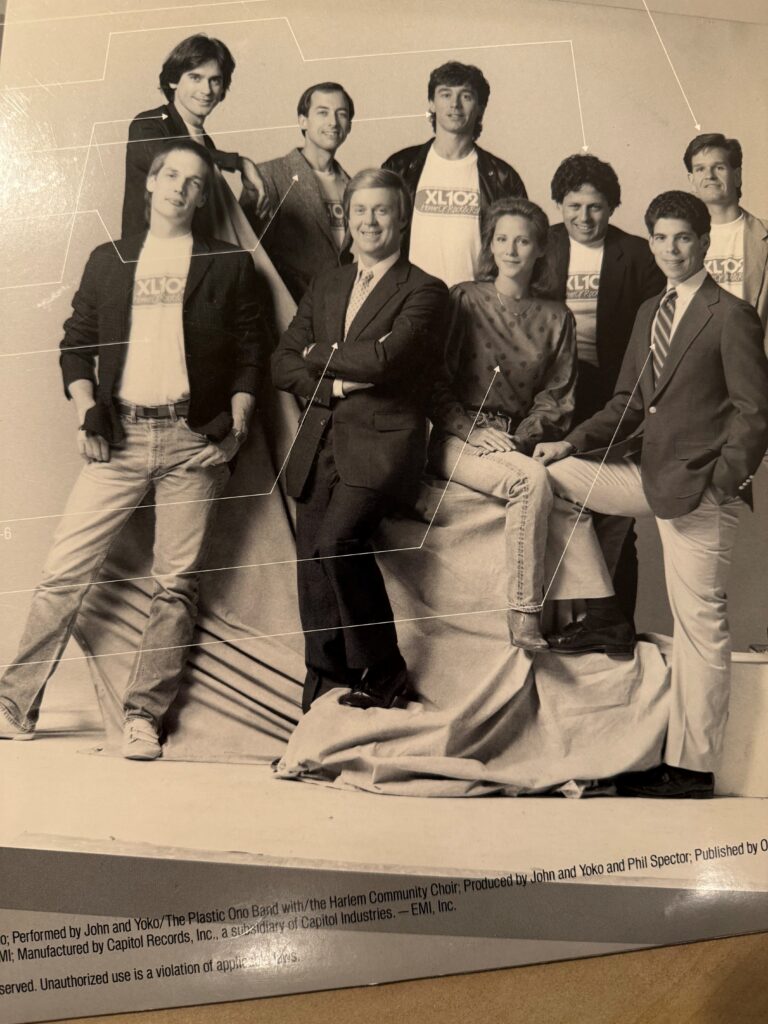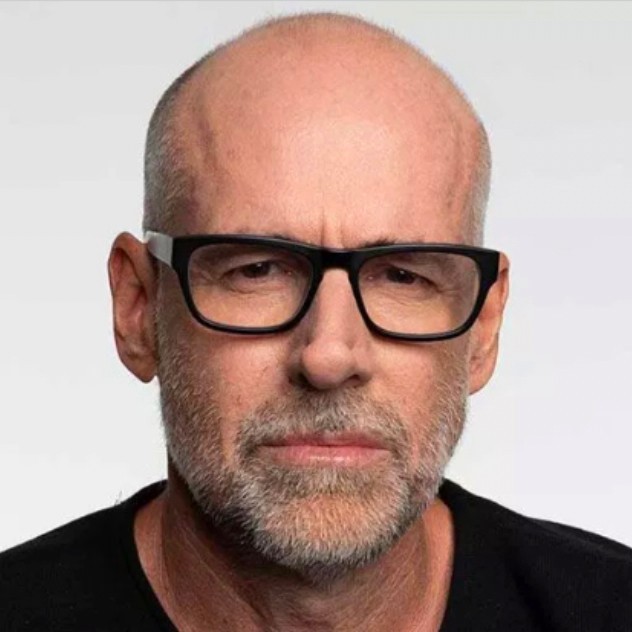How Columbia University’s 89.9 FM found Radio’s ‘lost script’ [Fred Jacobs]
Live campus radio coverage of recent protests proves that Gen Z is ready to reinvent broadcast radio if the current gatekeepers let them.
by Fred Jacobs of Jacobs Media
Hamilton Hall on the Columbia University campus | Photo: Wikipedia
Last week marked another historic moment in our country, and another reminder the youth of America have been alienated by incumbent older generations who refuse to give up their jobs and their positions.
On college campuses on the east and west coasts, as well as here in the “Great Midwest,” college students are letting us know how angry they are about the direction America is taking. I won’t dive into much of First Amendment free speech or the antisemitic language being used. But their alienation and frustration speaks for itself, no matter your politics. Like college student demonstrations of the past – and yes, I was in more than a few at the University of Michigan in 1968-69 – their means aren’t always artful or even logical. But the emotion behind these student uprisings demands attention today, as much as it did in past eras of unrest.

At Columbia, the world of journalism – and maybe broadcast radio – got a first-hand lesson in how to cover a controversial event from the student news team at WKCR 89.9 FM, a non-commercial college station that celebrated its 80th anniversary in 2021. The station programs Jazz, eclectic, and non-traditional music, along with a news team dedicated to covering the university and the world around it.
Last week, the news team at WKCR found itself thrust in the center of activity as students took over historic Hamilton Hall – named for Alexander Hamilton whose statue adorns the entranceway into the building. While traditional journalists could not gain access to cover what was really happening, the young WKCR news team sprung into action with continuous coverage from inside and outside Hamilton Hall. The WKCR staff got a real-time lesson in how to gather information and report on a stressful, high-stakes story right in their backyard, that was essentially about them.
And not surprisingly, these student journalists used the social media tools of their trade expertly – regularly posting updates and giving their listening audience the opportunity to provide feedback and encouragement:

To their credit, the New York Times and Washington Post provided impressive coverage of WKCR’s stellar efforts to report on this important story (alas, both behind paywalls). The Times’ photo essay is especially revealing, especially to use who got our starts in college radio. The carrier current Michigan State Network and affiliate stations in the university’s dorms served as my “official” start on the air. (Fortunately, all my old airchecks have been lost.) While I never was involved in any type of news event at MSU, seeing the photos of WKCR’s hardy group brought back a torrent of memories.
These are the kids that love radio, very likely intensified by last week’s events. And when you read the key part of WKCR’s stated mission, you can’t help but want them working for broadcast radio stations across America:

(Hey, NPR: Wouldn’t this be a smart move, bringing in some of these young news aces this summer for internships or apprenticeships?)
If you’ve ever been a part of meaningful emergency coverage at a station where you worked – especially early in your career – you can relate to what the young students on the WKCR staff experienced. For much of the crisis, they were the only reporters on the scene, not just informing the campus – but also the world. Their website crashed due to a streaming audience from across the globe. An estimated 20,000 listeners tuned in WKCR’s reporting.
Not surprisingly, the Pulitzer Prize Board (located at Columbia) commented on the courageous WKCR team, noting they “worked to document a major national news event under difficult and dangerous circumstances and at risk of arrest.” These are heady times for these budding radio journalists, suddenly pressed into the lineup by circumstance, opportunity, and meeting the moment.
And it suggests that young people might be more capable than many radio professionals think. Over the years, I have heard lots of noise about the work ethic of young people, often framed in a negative light. While their priorities may be different than ours (more on this disparity later in this post), they are just as smart – if not smarter – than we were, and frankly, they’ve been through a lot more with less to show for it.
The events of last week and the way the scrappy news team at WKCR stepped up to the plate suggests the same thing might have happened anywhere there’s a college station, and a staff who knows a little something about covering the news.

This goes to the heart of why we have been – and will continue to be – supportive of College Radio Day, a celebration of campus radio originated by Dr. Rob Quicke back in 2011.
College students who gain needed experience at these stations are more than capable, plenty motivated, and ready to do what’s necessary in order to fulfill their mission. In fact, when I was coming up in the radio business in the 1970s, many of the people programming and promoting stations were younger than the Millennials of today.
The other day I was perusing what’s left of my vinyl collection and happened upon a promotional EP that XL102 in Richmond engineered. It was a limited pressing of John Lennon’s “Happy Christmas (War Is Over)” pressed on white vinyl. PD David Grossman worked hard to make these albums possible, thanks to the kindness of Yoko Ono. Proceeds from these 102 collectors’ items were given to the Northern Virginia Food Bank. XL did the promotion in collaboration with WTVR-TV also in Richmond.
It was an impressive project for a medium market radio station, to be sure. But what blew me away was the XL102 staff picture on the back cover. To my aging eyes, they look like babies. My sense is most were in their twenties. And like so many working in radio “back in the day,” they sure weren’t middle-aged by any stretch of the imagination.

When I read about the WKCR kids, I thought about these staffers at XL102 decades earlier. Were they better broadcasters than the current crop programming radio stations today? That’s a hypothetical question, and I’m not going down that road. But I do think that back in just the third decades of most of their lives, the radio pros from yesteryear were more creative, more innovative, and more energetic than the aging group of programmers left today. They lived and breathed radio, often hung out together after 5pm, and were eager to learn whatever they could to do a better job with their precious radio brands.
Are the young aspiring radio stars of the day that much different? If anything, they may be more worldly, more seasoned, (OK, jaded), and certainly more knowledgeable about media and technology than most of us older hangers-on were. All they lack is the opportunity and the trust from management/ownership to do their best work. I marvel that back in the day, big companies like ABC and the other networks, along with some broadcasters still with us, like Bonneville and Hubbard, allowed young people of that time to prove what they could do at radio stations worth far more than their declining values today.
This phenomenon is not exclusive to radio or even the broadcasting industry. Depending on how you look at it, many young people in the workforce today are being held down or held back, making them accountable to aging Boomers and Xers. When you think about what Millennials and Gen Z’s have had to swallow, it is no surprise they’re angry, frustrated, cynical, and deeply troubled by the lousy cards most of them have been dealt on the career front.

If you’re familiar with Dr. Scott Galloway, clinical marketing professor at NYU’s Stern School of Business or you’ve read his books, chances are you’ve already considered the confining, limiting opportunities facing today’s youth.
His new book, “The Algebra of Wealth: A New Formula For Financial Security,” is a primer on how young people can make the best of their futures. Galloway is currently making the rounds on the talk show circuit. Recently, he showed up on “Morning Joe,” where this short diatribe (OK, rant) clearly explains our societal dichotomy:
@priforce Millennials/Gen Z are being cannibalized by the greed of Gen X/Boomers and it’s creating the biggest wealth gaps we’ve seen since the Great Depression. We are in a new Gilded Age where the politics of austerity and fiscal conservativeness means we “got money for wars but can’t feed the poor.” -Tupac Shakur #fyp#foryourpage#boomers#genx#genz#millennial#scottgalloway♬ original sound – Kalimah Priforce
Of course, Galloway isn’t singling out any industry, suggesting this set of circumstances is universal. And his “We have lost the script” line directly refers to the road to success young people once got from American society, a pathway that increasingly is lined with potholes, speed bumps, and other hazards that make it hard for them to succeed.
So while this new narrative is playing out in other businesses, that doesn’t let us grizzled radio vets off the hook. Not only are young programmers (and managers) few and far between in 2024, but as an industry, we essentially won’t even green light radio stations aimed at people younger than 25. What message does this send to Millennials and Gen Zs in your building – that their generation isn’t worthy of radio catered to them?

At a time when radio needs any edge or advantage it can muster, the youth piece is never even a consideration. It is never on the table. The very last perceptual research study commissioned in broadcast radio will most certainly target 25-to-54s.
There was a time not that many years ago when 25 and 30 year-olds routinely programmed major market radio stations. But rarely anymore. We are now in a world where the motto should be “Don’t trust anyone under 30.” In radio, that’s how we roll.
We have lost the script.
P.S. Alexander Hamilton was a ripe old 21 years of age when the Declaration of Independence was signed in 1776. (No, he was not one of the signers but played a major role in its creation and evolution.)
By today’s generational standards, Hamilton was a Gen Z.
Fred Jacobs founded Jacobs Media in 1983, and quickly became known for the creation of the Classic Rock radio format. Jacobs Media has consistently walked the walk in the digital space, providing insights and guidance through its well-read national Techsurveys. In 2008, jacapps was launched – a mobile apps company that has designed and built more than 1,300 apps for both the Apple and Android platforms. In 2013, the DASH Conference was created – a mashup of radio and automotive, designed to foster better understanding of the “connected car” and its impact. Along with providing the creative and intellectual direction for the company, Fred consults many of Jacobs Media’s commercial and public radio clients, in addition to media brands looking to thrive in the rapidly changing tech environment. Fred was inducted into the Radio Hall of Fame in 2018.